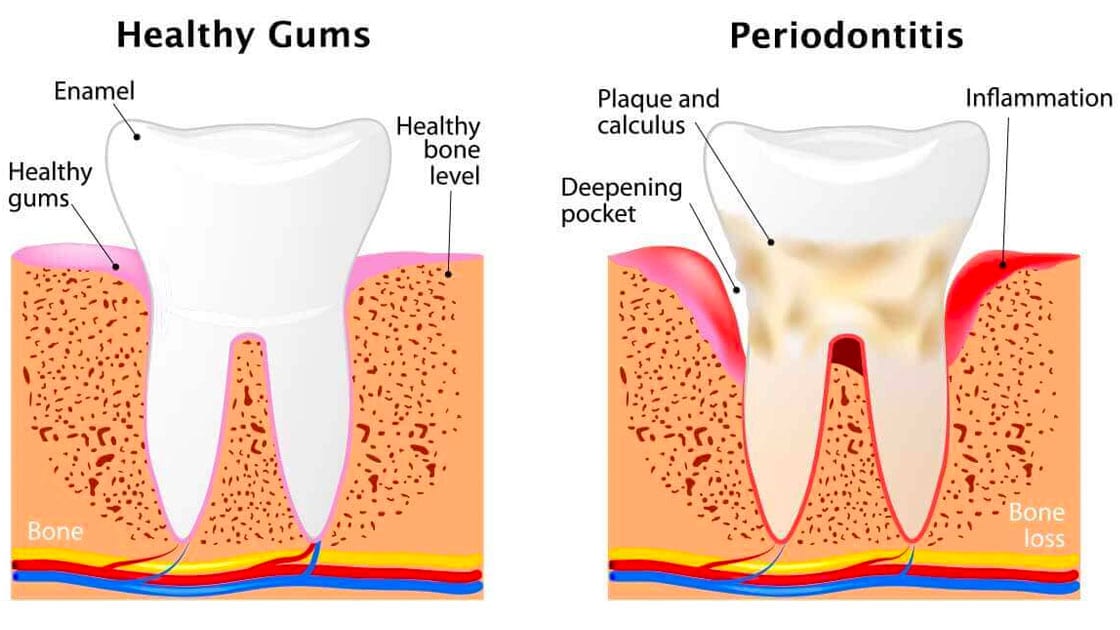Gum Disease has two main varieties - Gingivitis and Periodontal Disease.
Gingivitis exists when bacteria on the teeth result in gum inflammation.
Periodontitis exists when bacteria on the teeth result in gum inflammation and bone loss.
Periodontal Disease is a complex infection that is caused by bacteria and occurs in a susceptible host.*
Patients should know the main signs and symptoms of periodontal disease:
- Red, puffy, bleeding gums
- Foul odor or bad breath
- Bone loss
- Loose teeth
- Migration or flaring of teeth

Periodontal Disease shares similarities to other systemic diseases, such as Diabetes or Cardiovascular Disease. These similarities include:
- Slow, chronic progression. For example, nothing happens today or tomorrow. Destruction occurs over years or decades.
- Disease process is asymptomatic. Nobody "feels" the bone loss just like we don't "feel" atherosclerosis or high blood-sugar levels.
- We only feel the effects when the destruction has broken through a "threshold," causing a painful infection or complication.
- Treatment is often unable to make things as good as new.
- Genes also play a role, but through preventative treatment and behavior modification we can maintain healthy symbiosis.
Treatment Protocol
The main and most common treatment protocol for periodontal disease consists of Scaling and Root Planing (i.e. deep cleaning) and Maintenance Cleanings (3-4x per year). The goal of scaling and root planing is to remove bacteria that exist on the root surface (below the gums). This link connects to a video that helps you to see the scaling and root planing treatment. Deep cleanings and maintenance cleanings may also be helpful for patients with gingivitis.
Home Care Habits Matter
In addition to treatment at the dentist, your home care habits (brushing and interdental cleaning) help to control periodontal disease and gingivitis (Salzer. Periodontology 2000. 2020). Interdental cleaners, such Gum Brand's Softpicks, are key to cleaning in between the teeth, which brushing alone fails to do. We love to review the use of interdental cleaners with patients to help make sure their technique is excellent. When patients are in control of their periodontal disease (or gingivitis), the gums do not bleed. Bleeding is not normal and only occurs in the presence of bacteria.
We hope this information informs and inspires you to be your best dental self.
If you have a question about gum health that we do not answer, send us a note via email, text, or our website! We love keeping in touch and discussing oral health tips.
Open Dialogue about Your Oral Health
Any additional questions about your gum health? Send us an email, text, or note via the website. We are passionate about discussing the best evidence-based practices for oral health. Plus, an open dialogue is the best way for us to learn about your goals and values and for you to take charge of your oral health.
*Armitage Periodontology 2000, 2010
Contact us anytime at 212-687-3808.
